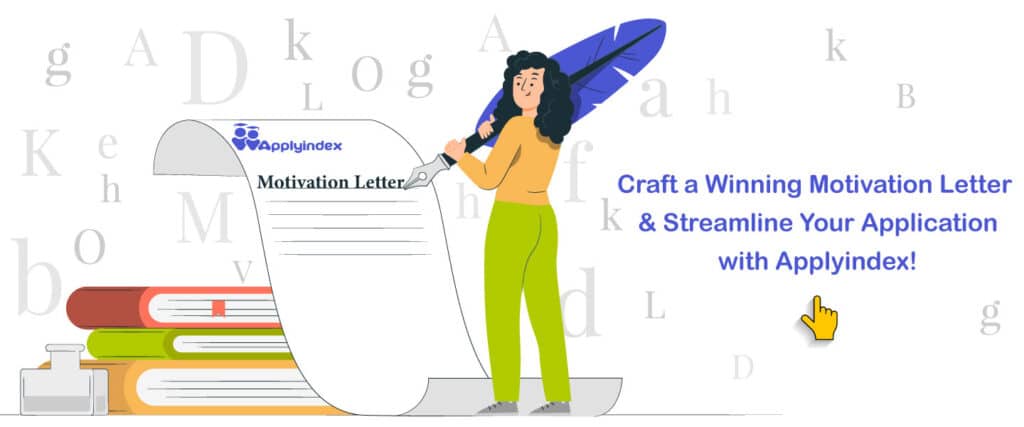
An academic curriculum vitae for scholarship (or academic CV for scholarship) is the backbone of your application package when applying for any kind of scholarship. The increasing importance of scholarships in academic pursuits has surged the demand for these prestigious awards. Both partially and fully funded scholarships alleviate financial burdens and serve as a testament to an individual’s academic merit, dedication, and potential for future contributions. To win one, your academic resume should make the best first impression on selection committees at universities and scholarship-providing bodies. To do so, you should prepare a strong, well-structured, personalized academic CV for scholarship applications to showcase your educational background, research experiences, publications, and any noteworthy accomplishments.
Concise and Detailed Academic CV for Scholarship
Your academic CV’s presentation is just as important as its content. A careful balance between conciseness and detail is crucial when creating an academic CV for scholarship applications. An academic resume that is too wordy may turn off the reader in a competitive selection process where committee members evaluate many applications, and one that is too vague may not adequately highlight your academic background. Concentrate on the most important and pertinent details that meet the requirements of the scholarship. Use succinct and straightforward language that includes active voice and measurable results to present your accomplishments effectively. A neat, well-structured foundation and format make it easier to read and guarantee that the review committee will understand and value your qualifications.

Solid Foundation and Format of Academic CV
Building a strong academic CV begins with organizing your contact details, educational background, research interests, academic achievements, professional accomplishments, and various skills (e.g., lab skills, soft skills, or computer skills), lastly finished by the References section. These elements ensure a comprehensive portrayal of your academic journey, both past and present. The structure and emphasis of an academic CV can vary depending on your field of study and the degree level you are applying for. For instance, including a “Research Interests” section is crucial when applying for a PhD in chemistry. However, it is less relevant for applicants to a PhD in law or a course-based master’s program.
Essential Sections of CV for Scholarships
Understanding the essential components of an academic CV is necessary to create one that stands out. This article examines the techniques for creating a strong academic resume for scholarship applications, giving prospective students the knowledge they need to effectively highlight their qualifications. It should succinctly lay a solid foundation, balance the content, highlight research achievements, highlight excellence, and personalize your story.

Education History at Top of CV
After the “Personal Information” section, start your academic CV with the “Education (or Educational Background)” section, which serves as the cornerstone and puts your credentials in perspective. Include information about the degrees you have earned, the schools you attended, and any pertinent coursework. Then, to show your interest and promise in your field, highlight your research experiences by going into detail about particular projects, approaches, contributions, and significant findings. Professional achievements, which demonstrate the real-world application of your academic knowledge, enhance your academic CV even more. To highlight your contributions as acknowledged by peers and professionals, highlight any awards, recognitions, or honors, and include internships, work experiences, or group projects.
Research Interests at Top of CV
You can remove this section from your academic CV if applying for undergraduate scholarships. You can rename the “Research Interests” section of your academic CV to “Fields of Interest” or “Areas of Interest” if you are applying for a course-based degree and are NOT looking for research-based master’s scholarships or fully funded PhD scholarships in Australia. Using broad or general fields such as business, finance, chemistry, biology, petroleum engineering, and psychology is also acceptable. Conversely, most global research-funded opportunities are known as fully funded scholarships for international students. Therefore, the “Research Interests” section of your CV should be written with great care and attention if applying for research-funded master’s and doctoral scholarships.
Many applicants actively seek an answer to the “research interest at top of CV?” question. Yes! The best place for the research interests section is at the top of the CV after the Education section. A minimum of 3 and a maximum of 5 lines are sufficient for this section. Avoid listing only general research interests like Engineering or Science. Instead, provide specific details about your research interests to show supervisors and admissions committees that you have a solid understanding of or background in the field. Writing only general research interests might give the impression that you lack in-depth knowledge or have not read academic articles about the field, making you appear uninformed.
Academic Awards and Achievements in Scholarship CV
Your CV functions as a canvas where you illustrate a vivid picture of your academic journey and scholarly accomplishments. Your accomplishments act as the strokes that embellish the canvas of your academic career’s masterpiece, underscoring the importance of portraying them in a manner that encapsulates the true essence of your scholarly capabilities. Under the “Academic Awards” or “Academic Achievements” section, you should list any academic accomplishments you have, such as:
- Offered admission to the PhD Program in Chemical Engineering at ×××××××× University of Technology, [country], as an exceptionally talented graduate student and Olympiad winner, fall 20××.
- 09/20××-09/20××: Scholarship for Olympiad winners, [country’s] National Organization of Elites, $1000/year, Description: I was granted this scholarship during two years of my master’s as a Bronze Medal winner of Chemical Engineering Olympiad.
- Office of Talents’ member, ×××××××× University of Technology, 20××-20××.
- Exempted from the Nationwide University Entrance Exam for MSc degree in Iran because of Olympiad ranking, 20××.
- Member of [country’s] National Organization of Elites as an Olympiad winner, from September 20×× to now.
- Olympiad Ranking, Bronze medal in Chemical Engineering, the 15th Olympiad of Student-Science Course of [country], 20××.
- Olympiad Ranking, 1st rank in the first step of the 15th Chemical Engineering Olympiad of Student-Science Course of [country], 20××.
- Overall Ranking, Second top student in BSc at ××××××× University, class of 20××.
- Distinguished student in Chemical Engineering-Refining Industry, ××××××× University, 20××-20××.
- Member of the Office of Talents, ××××××× University, 20××-20××.
Research Outcome in CV: Publications and Scientific Meetings
Publications and presentations to the academic community show a strong dedication to knowledge advancement. Under the “Publications” section, list your published works, including communications, books, book chapters, review articles, featured articles, and original research papers. To ensure clear organization, use subheadings such as “Papers” and “Books and Book Chapters” if you have both books and papers. Additionally, include a separate section after “Publications” for any oral or poster presentations you have given at conferences, symposiums, congresses, or other scientific gatherings.
Work and Teaching Experiences in Academic CV
They would support your academic curriculum vitae for scholarship applications if you have work experience related to your field of study and academic teaching experiences as a lab demonstrator or tutor. In your motivation letter for a scholarship, you could link soft skills like team management, collaboration, and independence to any successful project leadership you have had in the workplace. A talent for encouraging teamwork and developing meaningful professional relationships produces a synergistic work environment. Additionally, your teaching experiences demonstrate outstanding verbal communication, public speaking, and supervisory abilities.
Workshops and Online Courses in Academic Resume
Possessing pertinent professional certifications shows a dedication to lifelong learning. In chemical engineering, environmental science, renewable energy, chemistry, mechanical engineering, biology, pathology, immunology, and many other fields that could improve your resume, workshops and in-person training courses rank among the most valuable professional certifications sought after by e-learning students. Students studying computer science, information technology, psychology, law, management, business, marketing, and many other subjects also benefit from online classes. You are an excellent candidate for any scholarship when you combine these certifications with your academic background.
Various Skills in Resume for Scholarships
Depending on your field of study or linguistic aptitude, your academic resume may also include headings for research, computers, language, and soft skills. For example, you may not need the “Language Skills” and “Research Skills” sections if you are a cybersecurity student and a native English speaker from the USA. Conversely, these sections are more important to a Turkish organic chemistry student than the “Computer Section” on their academic resume. Even though a “Soft Skills” section is uncommon on resumes, we strongly advise including one unless it makes your CV too lengthy; in this case, highlight your strong soft skills in your personal essay. Lastly, your list of references should appear at the end of the academic CV.
Aligning Your Academic CV with Scholarship Requirements
Customizing your academic resume for scholarship applications is critical, and it will be guided by understanding the selection committee’s priorities. Start by thoroughly researching the specific requirements of the scholarship, including community involvement, research experience, or other specialized academic criteria. Next, carefully customize your academic CV for scholarship applications based on this research. For instance, highlighting a particular publication in a prestigious journal is a priority for research-funded scholarships. Additionally, to establish alignment, use the same language and terminology as the scholarship guidelines. This will demonstrate your consideration for their preferences and go beyond a one-size-fits-all strategy. Effective customization of your application makes you a candidate who understands the subtleties that each scholarship committee values.
Conclusion
Crafting an outstanding academic CV for scholarship applications requires a meticulous approach, starting with a detailed educational background, research interests (if applicable), research experiences, academic achievements, and professional accomplishments. The CV should comprehensively represent intellectual and professional growth, exceeding scholarship committees’ expectations. Achieving a balance between brevity and detail is crucial, involving strategic selection of impactful information aligned with scholarship requirements and using concise yet informative language. Language choices, formatting techniques, and visual appeal are essential to ensure a compelling and easily navigable CV. You may find some resume for scholarship templates in your Applyindex profile.
Frequently Asked Questions (FAQs)
What makes an academic CV different from a regular resume?
An academic CV is more detailed and focuses primarily on your educational background, research experience, publications, teaching roles, and academic achievements, tailored for university admissions, scholarships, and research positions, unlike a resume that targets job skills and professional roles.
Do I need to include a ‘Research Interests’ section in my scholarship CV?
It depends on your scholarship type. If you are applying for a research-funded master’s or PhD scholarship, the “Research Interests” section is crucial and should include specific and well-defined topics to demonstrate your academic focus. For course-based degrees or non-research scholarships, you can omit this section or rename it “Fields of Interest” and keep it broader.
How long should my scholarship CV be?
Ideally, your CV should be two pages long. However, if you have extensive experience, including publications, awards, or teaching roles, extending it to three pages is acceptable. The key is to be concise but informative, presenting the most relevant and impressive aspects of your academic profile.






0 Comment